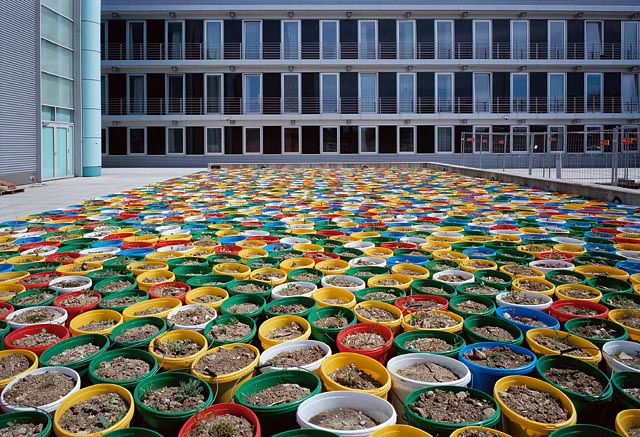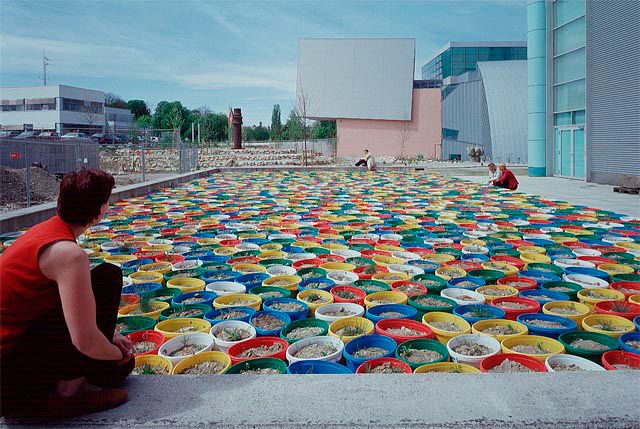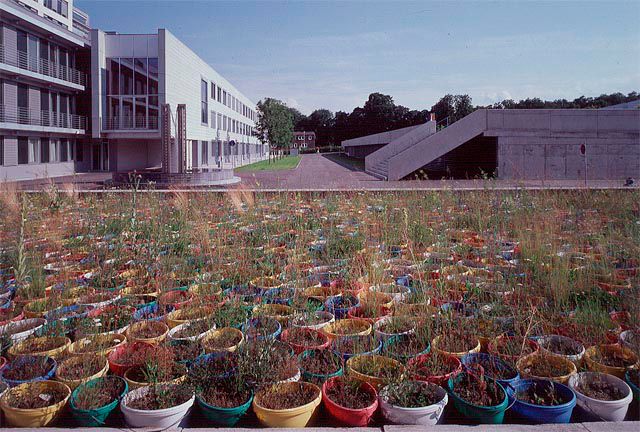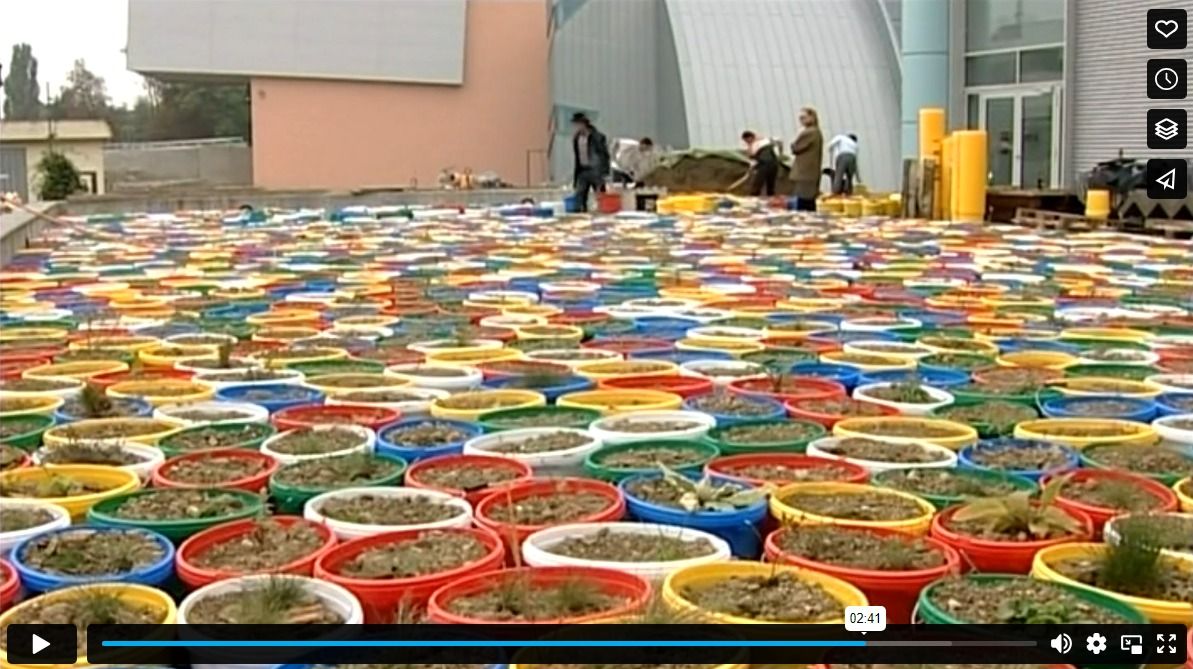Lois Weinberger
:
Garten
Back
Information
Lois Weinberger selected a place to establish a plant reserve in the sculpture park of the Lower Austrian Landesmuseum. "The space intended as the garden is densely filled with colourful plastic containers. These are filled with soil / according to the pannonic space / the planting is left to the wind / the birds / the seeds already existing in the earth. 'With time' – seen as an integral aspect of time – the containers will dissolve, becoming visible only as colourful splitters on the solid – overgrown – flat surface. The shallow layer of soil on concrete regulates the height, and to some extent the type of vegetation itself – a work / which does not allow an idyllic place to come into being and which is constantly changing." (Lois Weinberger)
Lois Weinberger's work is based on research carried out in an area to be found on the urban periphery, on urban wasteland and other sites of fracture between the town and the country, between nature and artifice. He concentrates on the wild plants that grow in these areas generally considered to be 'weeds'. He investigates and collects this kind of vegetation using a substantial amount of specialised knowledge. It tends to require little water or care, and he lays out gardens that contradict the usual middle-class understanding of same. The gardens are long-term projects that Weinberger combines with other media such as paintings and drawings which could just as easily be ornamental images as works of cartography or charts. Film and photography play an equal role here to images using language or passages of text.
Lois Weinberger selected a place to establish a plant reserve in the sculpture park of the Lower Austrian Landesmuseum. Here too, as Weinberger says, the idea is to lay the living visibly over the regulatory. Furthermore the garden revives the not so distant history of this formerly peripheral site and opens up a new temporal framework. Determined by the growth and the season, the function of the site, which is determined by the architecture and the museum, gains a casual aspect where attention is directed not to the culturally elevating but to the ground, appealing to and binding this experience with another way of looking at things.
(Susanne Neuburger)






